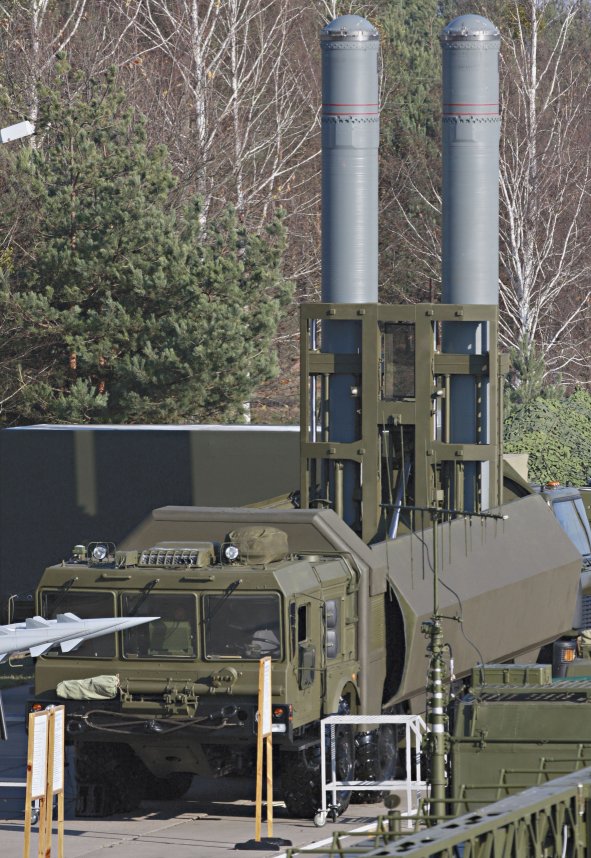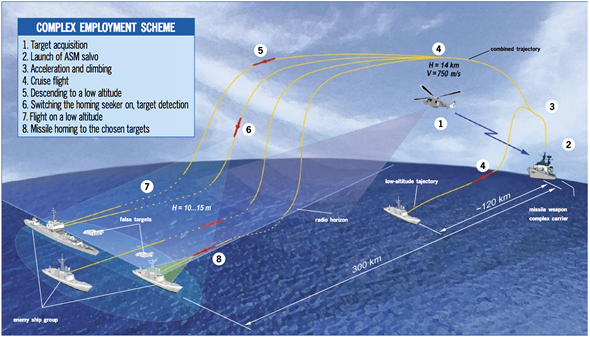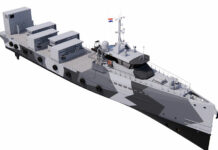
The expected arrival of the P800 Yakhont supersonic anti-ship missile in Syria is considered the first serious attempt by Syria to directly challenge the Israel Navy since the 1973 war, when the Israeli Navy sunk five Syrian vessels in the first missile-boat engagement known as the ‘Battle of Latakia’. Four decades later, the P800 Yakhont is far superior than the Styx missiles that failed to protect the Syrian Navy in 1973. Much like the Russian-Indian Brahmos, the earlier Moskit and Supersonic Alpha, Yakhont has the capability to strike its target at supersonic speed, flying at very low level, leaving the defender much shorter time to react. Yet, ship defenses have come a long way since the Electronic Warfare (EW) systems that saved the day and won the battle for the Israelis.
AEGIS systems, used on U.S. Navy and many NATO vessels, the European PAAMS, used by the Royal Navy, French and Italian navies and Israel’s new Barak 8 ship air defense system are designed to match such treats. So does Israel’s ‘Magic Wand’ system, employing the Stunner missile interceptor, capable to counter these potent missiles effectively if employed in surface/surface or ship/surface role. However, the majority of smaller naval vessels, still equipped with ‘point defense’ anti-missile systems were not designed to counter such high speed attacks, particularly when it comes in salvos of two or four missile.
Such elements are at risk within ranges of 300 km, by missiles fired from the Mediterranean Syrian naval bases at Tartus and Latakia. Yakhont typically cruises to the target area at high altitude, and then descends for a sea skimming attack from under the horizon. The distance at which it begins its descent can be programmed before launch, by determining the achievable range, which is between 120 (low level flight) – 300 km (high mid-course, low-level beyond the horizon to the target.

While some navies could avoid this area, for Israel, the long range of the P800 means its naval vessels could be at risk, even at their main base in Haifa, a site already compromised by rockets fired from Lebanon during the 2006 war. Israel’s second naval base in Ashdod could be targeted from land-based sites in Southern Syria. Furthermore, when targeting Israeli naval patrols in international waters off the Lebanese coast, P800 can be vertically launched from inland sites in Syria or Lebanon, fired behind the Lebanon mountain ridge, avoiding detection from the sea, thus minimizing the early warning for the targeted vessels. Therefore, accelerated fielding of Barak-8 and Magic Wand systems should be a top priority for Israel. Another risk for Navies operating in the Persian Gulf presents a technology leak – by such a missile falling into Iranian hands, which could accelerate the introduction of such potent weapons in Tehran’s growing anti-shipping arsenal.

The current contract, estimated to be worth $300 million includes the delivery of two Bastion coastal defense systems, each includes 36 missiles. It is yet unclear if the Syrian navy will also opt to equip its naval platforms will with these new weapons. The Yakhont can be fitted with relatively small vessels, from corvette size and larger. The Bastion system is operated from mobile launchers on land, each launcher carries two ready to launch missiles. Another configuration is designed for airborne platforms. But even with these potent weapons in hand, the Syrians may not yet be ready to employ them effectively. Syria currently does not have the means to effectively target the missile beyond the horizon, lacking maritime patrol aircraft, unmanned aerial vehicles or attack aircraft capable of carrying such missiles. Even their largest Petya class Anti-Submarine Warfare (ASW) frigates do not have a flight deck for the Ka-28 (Helix) helicopters, operated by the Syrian Navy. The Syrians do not have the capability to detect, track and designate targets at those ranges since, being a small, defensive force, they did not have any weapon reaching out to these ranges. This is particularly true when the target is ‘silent’ and cannot be targeted by surface-based Electronic Support Measures (ESM).

If the Syrians are seriously planning to extend their operational reach with the missile, one has to watch out for Syria to reach for UAVs, naval patrol aircraft (Be-200 or Il-38 from any CIS nation or other countries (decommissioning such aircraft could be an option). Such transfer of equipment could be unnoticed as it does not involves weapons transfer. They could also opt for upgrading the Su-24MK ‘Fencer D’ to take on maritime recce role. Even more serious is a combination of Su-27/Su-30 and P800s, which could provides the P800 with the stand-off targeting and attack capability against surface targets. The Russians are using their Onyx version of the weapon with their Su-33 carrier-based naval fighters. By knowing the P800 is within range, the Israeli Navy will definitely lose its dominant and unchallenged position in the Eastern Mediterranean, particularly along the Lebanese coast, and therefore should take defensive measures – certainly be on guard, which it failed, during the Second Lebanon War in 2006, when ISN Hanit was hit unexpectedly by a Hizbollan C-802 missile – having turned off its on-board defensive systems.
Of course, for deliberate ‘ambush’ attacks Syria could try deploying forward targeting using merchant or fishery vessels sailing in the Eastern Mediterranean or submarines, provided by allies such as Iran (since Syria do not have any submarines now, after decommissioning their 3 Romeo subs about six years ago). But this is really a long, long shot that would cost Syria dearly.
Altogether, for the short term, the arrival of the P800 in the Mediterranean is a serious threat. Over time, as the Israel Navy gets its Barak-8 missiles and ‘Magic Wand’ deployed, the threat could be contained, given the Syrians will not deploy large numbers of these missiles on platforms and constellations that would maximize its capability to launch saturation attack against the IN leading vessels. Whatever the case may be, both sides, the Syrians and the Israelis need time to deploy and defend so the threat may be serious, at first sight, but viable solutions are already in sight.






















